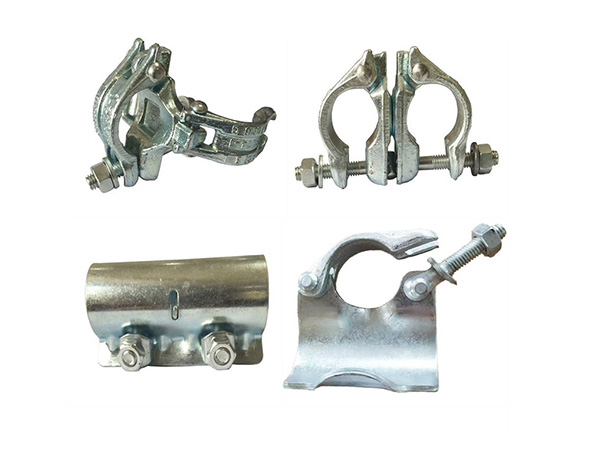- Site Navigation -

Galvanized Fastener
Galvanized fasteners refer to standard scaffolding fasteners that have been hot-dip galvanized with anti-corrosion treatment.......
Galvanized fasteners refer to standard scaffolding fasteners that have been hot-dip galvanized with anti-corrosion treatment.It is a specialized component that connects steel pipes in steel pipe scaffolding,and its galvanized surface layer is primarily used to resist corrosion,thereby extending its lifespan and ensuring structural safety.
2.Main types
Galvanized fasteners mainly include the following three basic types that form the core connectors of the scaffolding system:
Right-Angle Coupler/Fixed Coupler
Function:Used to connect two vertically intersecting steel pipes(such as vertical poles and crossbars)to form a stable 90-degree angle.
Features:It is the most commonly used fastener for building the main frame of the scaffolding.
Swivel Coupler
Function:Used to connect two steel pipes that intersect at any angle.
Features:Mainly used for installing diagonal braces to enhance the overall stability and resistance to lateral forces of the scaffolding.
Sleeve Coupler/Joint Pin
Function:Used to dock and extend two steel pipes on the same axis.
Features:Specially designed for connecting long vertical bars or crossbars,and cannot be used to replace right-angle or rotating fasteners.
3.Why do you need galvanizing?
Scaffolding is exposed to the outdoors for a long time and faces the erosion of rain and humid air.Galvanizing is the key to ensuring its safety and economy:
Anti-rust and anti-corrosion:The zinc layer forms a physical barrier on the surface of the steel and protects the matrix steel from rust through the electrochemical principle of"sacrificing the anode".
Extended life:Thick and durable hot-dip galvanized allows fasteners to last for decades in harsh environments,far better than ordinary paint or black parts(unplated).
Safety:Corrosion can significantly reduce the strength and toughness of metals.The use of galvanized fasteners prevents brittle fracture or slippage caused by rust,fundamentally eliminating potential safety hazards.
Cost-effective:Although the initial input cost is higher than that of ordinary fasteners,their long service life and minimal maintenance requirements make the total cost lower.
Compliance with standards:Domestic and international scaffolding safety standards(such as GB 15831 in China,BS EN 74 in the United Kingdom)generally require fasteners to be reliably anti-rust.








